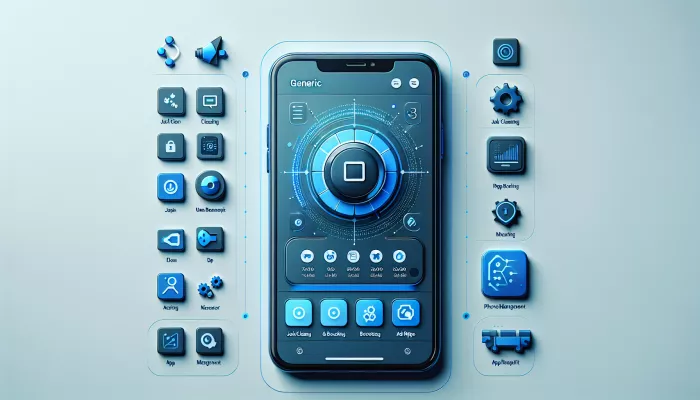
The cleaning of the application cache can free up vital space that is often taken up by useless temporary data. This can help give your Android more Speed and Security
Unused apps take up space and can run in the background, slowing down performance. Uninstall these applications can speed up your device.
The reduction or deactivation of animations in the interface can result in a faster and more straightforward user experience on Android devices.
Keep your apps up to date. Developers often optimize their apps in updates to improve performance and security.

Applications running in the background can consume system resources. Use the Application Manager to close processes that are not essential.
Use functions of battery optimization can not only prolong your load, but also improve performance by restricting background activities that are not a priority.
Alternative launchers can offer a cleaner and faster experience compared to the default launcher that comes with your device.
One factory reset It may be the solution to restore your device's performance if all other options fail, but remember to backup your data.
Efficient screen lock: The first line of defense for your device is a robust screen lock.
Using a pattern, PIN, or password that is difficult to guess is crucial to keeping intruders out. Avoid obvious combinations like birthdays or “1234.”
Additionally, consider utilizing available biometric authentication, such as facial recognition or fingerprint scanning, for an extra layer of security.
Remember that convenience should never compromise security.
Keep your device secure by updating its software regularly. Updates often include fixes for security vulnerabilities that could be exploited by malware and hackers.
Only install apps from trusted sources, such as the Google Play Store, and avoid downloading software from unknown websites that could potentially host malicious apps.
In other words, before installing any app, read reviews and do some research on the developer to ensure their credibility.
Also, check the permissions requested by the app and consider whether they are necessary for it to function.
If a flashlight app asks for access to your contacts, for example, that could be a red flag.
When accessing public Wi-Fi networks, always use a reliable VPN (Virtual Private Network).
This creates a secure tunnel for your data, protecting information going to and from your device from unwanted eyes.
A reputable antivirus application can make all the difference in detecting and removing malware. Make sure you choose a reliable software and keep it up to date.
Using a password manager can help keep your credentials safe. Password managers make it easy to use complex, unique passwords for each service without having to memorize them.
It is vital to perform regular backups of your Android device. In case your device is lost or stolen, you will have a backup of your data and can easily recover it.
Don’t forget about the physical security of your device. Avoid leaving it unattended in public places and consider using accessories such as protective cases to prevent damage in the event of drops or collisions.
By default, Android does not allow the installation of apps from unknown sources. Make sure this setting is enabled to avoid accidentally installing malware.
Final Tip: Watch out for unusual signs on your device, such as slow performance, excessive pop-ups, or unrecognized apps.
This may indicate the presence of malware and may require detailed inspection and cleaning.
For example, keeping your Android device updated is crucial for both performance and security.
Below are simple steps to ensure that your device always has the latest version of the system available.
Also, before updating your device, it is important to know which version you are working with.
Go to “Settings”, scroll until you find “About the phone” and then tap “Software Information” to find your current Android version.
In this sense, to avoid forgetting to perform updates, the ideal is to configure your Android to update automatically.
This can be done by accessing the “Settings” of the device, searching for the area of "System", and then in “Software Update”, activate the option “Download updates automatically”.
Before proceeding with any update, it is essential that you backup your data.
Still, this can be done using cloud storage services like Google Drive or backing up to an external storage device.
For example, if you prefer to have more control over updates or if your version of Android doesn't support automatic updates, you can also update manually.
Go to the “Settings”, right away "System" and then tap “Software Update”.
Press “Check for updates” to see if updates are available and follow the on-screen instructions to install them.
However, don't forget that apps also need attention. Visit the Google Play Store, go to “My apps and games” and update applications that have newer versions available.
After each system update, it is also important to review your security and privacy settings to ensure nothing has changed.
Afterwards, new security settings are adjusted as needed.
In other words, by following these simple steps regularly, you will keep your Android device fast and secure, ensuring protection against threats and the best possible performance.